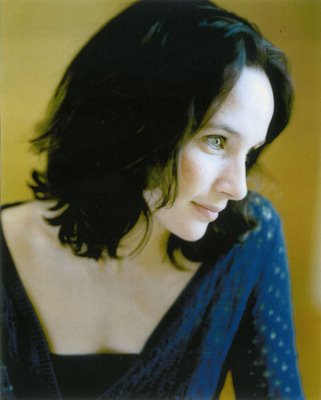After a mixed gala season opening concert and last week's welcome news that Christoph Eschenbach had been appointed Music Director, the National Symphony Orchestra officially got its fall season under way this weekend with a program under the baton of guest conductor Miguel Harth-Bedoya. The Peruvian-born music director of the Fort Worth Symphony shows up in these parts once a year or so, and when last reviewed with the NSO he did a fine job standing in for the indisposed Mstislav Rostropovich. He led the NSO in a quest to find the suave, polished side of Shostakovich's fifth symphony (D minor, op. 47). Shostakovich composed the work in the spring and summer of 1937, shortly after the condemnation of his acerbic and masterful opera Lady Macbeth of Mtsensk by the Soviet authorities. The composer's patron and protector, Marshal Tukhachevsky, was executed by Stalin as an "enemy of the people" in the midst of the work, meaning that Shostakovich's fear for his own life must have been extreme. It is perhaps the least sardonic and dissonant of the Shostakovich symphonies, as if the composer were consciously toning down his modernist style to please party officials. Later, Solomon Volkov claimed, in his book of recollections of conversations with Shostakovich (now generally disputed), that the composer thought of the fifth symphony not as a concession to Soviet demands but as a secret condemnation of it.
Whatever the truth may be, the symphony sounded good with some velvet to prepare the hammered, militaristic conclusion, what Shostakovich described (supposedly, according to Volkov) as like someone hitting you over the head with a stick and saying, "Your business is rejoicing!" On Friday night, the first violins had a warm, luminous sound in the first movement, and the crucial flute and oboe solos (especially in the second and third movements, respectively) were spot on. Harth-Bedoya's agitated beat was often difficult to follow, at least for me, and by the sound of some misaligned sections, for the orchestra at times, as in the exciting but wayward accelerando in the first movement, where the trumpet fanfares spun out of control. The second movement came off as an understated parody of a Viennese waltz, with a hilarious contrabassoon solo. Harth-Bedoya's silken approach paid off in gold in the warm, tragic third movement, scored for strings and winds only. The fourth movement, with its shock-and-awe fusillades of drums and brass and over-the-top iterations of D major, blew the roof off the Kennedy Center Concert Hall.
What likely drew such a large crowd was pianist Hélène Grimaud, back again with Beethoven's Piano Concerto No. 4 (G major, op. 58), after playing the fifth concerto with the Philadelphia Orchestra here last season. Grimaud's 2006 recital at Shriver Hall drew the largest crowd I have ever observed in that venue, although the cynic would argue that the French pianist's star power comes more from her physical beauty than her musical talent. That would be unfair to Grimaud, who has impressive technique and a style that accentuates idiosyncratic individualism and particular strength in lacy, hazy textures.

The fourth piano concerto is my favorite of Beethoven's handful because the composer sidestepss most conventions of the classical concerto. I am not the only one to regard it as special: it is the work that sparked Martha Argerich's musical awakening, when it was played by Claudio Arrau (Argerich refuses to play it to this day). It was disappointing to hear Grimaud not take advantage of her mysterious, evasive side right from the start, rushing through the concerto's dolce solo piano opening, such an unusual way to start a concerto. (At least no one in the audience had to be taken to the hospital, as happened, twice, during her performance of the work in London Leeds recently.) Grimaud's trills were iridescent, and she spun some gauzy spider webs of sound in the recapitulation's second theme (which returns unexpectedly in the parallel minor). As most do, Grimaud played Beethoven's cadenzas, which although extended, are carefully crafted to fit into the orchestral returns. It was here that she took the most rhythmic freedom, as she often does in her solo playing.
The orchestra played well in the concerto, but slightly more sloppily in the first Beethoven offering, the overture to The Consecration of the House, op. 124. The principal flute and oboe players were sorely missed in the first half, but most of the playing was competent, if a little generic. Harth-Bedoya's odd, anticipated beat caused the most trouble in the overture, where the NSO responded in a slightly sluggish way, causing more than a few misalignments of ensemble. The Beethoven paid the price for the more solidly rehearsed Shostakovich, in what was a good if not exceptional opening to the season.
This concert will be repeated this evening (October 4, 8 pm), in the Kennedy Center Concert Hall.






















































1 comment:
One correction- the concert in which two members of the audience fainted and one was hospitalised was in Leeds not London.
Post a Comment